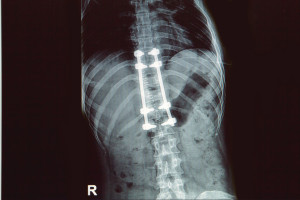What to do after a Failed Spinal Fusion Surgery?
Category: Minimally Invasive Surgery, Procedures | Author: Stefano Sinicropi
 For a variety of reasons, surgery sometimes fails. But all hope is not lost after a failed spine surgery. There can be numerous additional options for fixing the underlying issue. In this blog we are going to talk about some options for patients who have experienced a failed spinal fusion procedure.
For a variety of reasons, surgery sometimes fails. But all hope is not lost after a failed spine surgery. There can be numerous additional options for fixing the underlying issue. In this blog we are going to talk about some options for patients who have experienced a failed spinal fusion procedure.
After Failed Surgery
There are a number of factors that can cause surgery to be unsuccessful. Spinal fusions in particular can fail for any of the following reasons:
- Issues with the bone graft.
- Complications with the spine hardware.
- The patient was not a good candidate for the surgery in the first place.
- Poor surgical technique.
Essentially, a spinal fusion fails when it does not reduce the patient’s back pain, and/or does not immobilize the fused region of the spine (after all, those are the two primary goals of a spinal fusion).
Revision Surgery
The spine is an incredibly complex structure and even the best surgical procedures are not 100% flawless. When a spine fusion fails, a revision surgery may be the best approach. In the lumbar spine, a combination posterior and anterior fusion can help better stabilize the area. The fusion can be performed with different, more effective methods as well.
A different surgical procedure may also be more effective for certain patients. A total disc replacement procedure is a common alternative to spine fusions. If a fusion surgery fails, a disc replacement surgery may work instead.
When it comes down to it, every patient is different and it is impossible to fully anticipate how a person’s spine will react to a surgery. A surgeon does their absolute best to offer their best recommendations. At times, these recommended procedures are unsuccessful. When that happens, it is time to get a second opinion and discuss how to move forward.